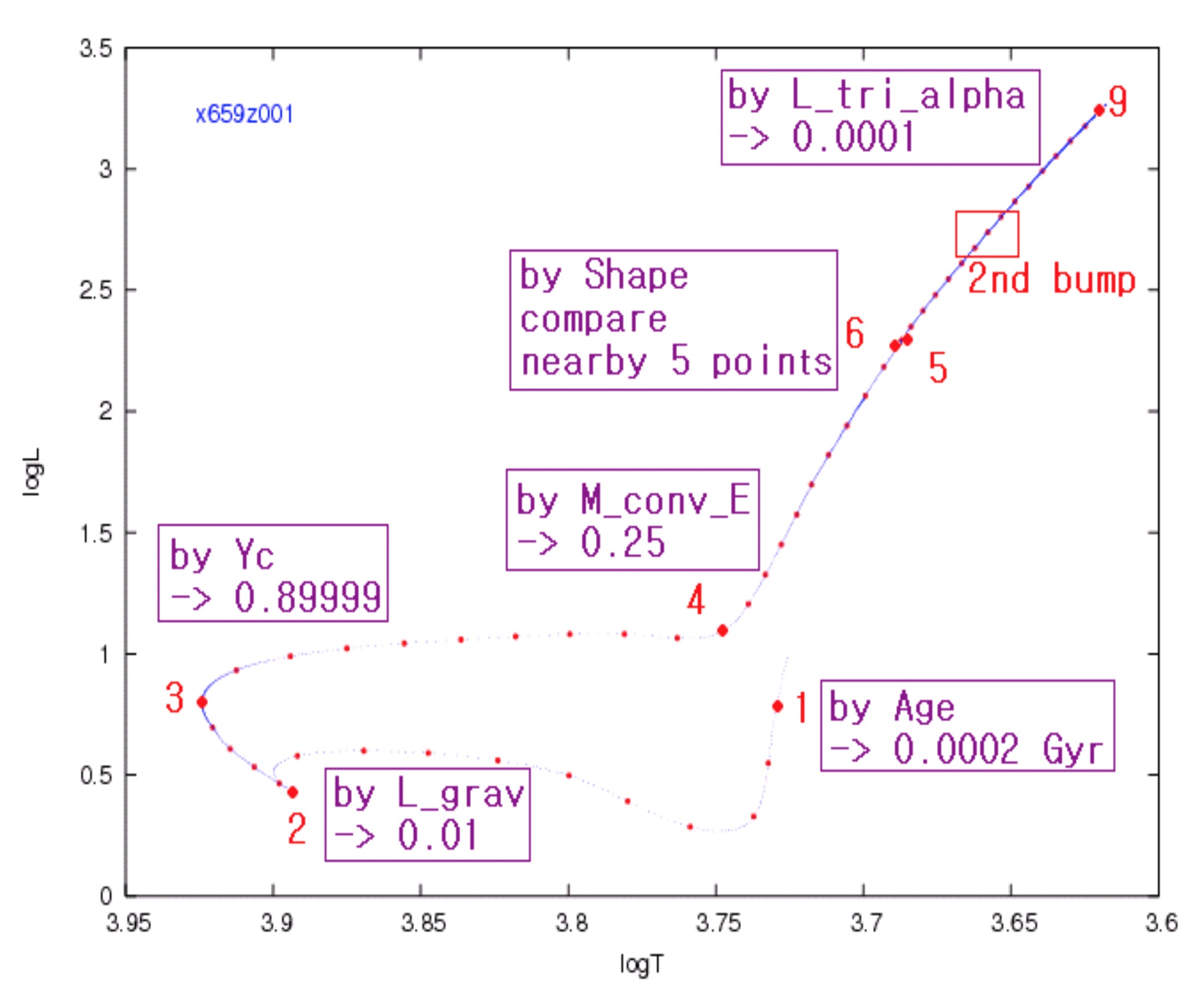
The 9 Primary EEPs are identified first, and then the secondary EEPs are set in between, in equal spacing.
This is for interpolation in Y, [a/Fe], Z, and age.
The interpolation program has been debuged in May 2018. Please download it again.
The first announcement of the 3rd version has been;
Yi, S. K., Kim, Y. -C., Demarque, P., Lee, Y. W., Han, S.-I. and Kim, D. G.
`The Y2 Isochrones getting an extra dimension' (2008)
The Art of Modelling Stars in the 21st Century, IAU Symposium 252,
held 6-11 April 2008 at Sanya, China, 413 -- 416
The HB tracks (Han, S.-I. et al. 2009)
will be on-line soon.
| The coverage of the base set | The coverage of the extra set for wider range of Y | ||||||||||||||||||||||||||||||||||||||||||||||||||||||||||||||||||||||||||||||||||||||||||||||||||||||||||||||||||||||||||||||||||||||||||||||
|---|---|---|---|---|---|---|---|---|---|---|---|---|---|---|---|---|---|---|---|---|---|---|---|---|---|---|---|---|---|---|---|---|---|---|---|---|---|---|---|---|---|---|---|---|---|---|---|---|---|---|---|---|---|---|---|---|---|---|---|---|---|---|---|---|---|---|---|---|---|---|---|---|---|---|---|---|---|---|---|---|---|---|---|---|---|---|---|---|---|---|---|---|---|---|---|---|---|---|---|---|---|---|---|---|---|---|---|---|---|---|---|---|---|---|---|---|---|---|---|---|---|---|---|---|---|---|---|---|---|---|---|---|---|---|---|---|---|---|---|---|---|---|---|
|
|
||||||||||||||||||||||||||||||||||||||||||||||||||||||||||||||||||||||||||||||||||||||||||||||||||||||||||||||||||||||||||||||||||||||||||||||
| Y = dY/dZ * Z + Yp, for Yp=0.23 | Y = dY/dZ * Z + Yp, for dY/dZ=2.0 | ||||||||||||||||||||||||||||||||||||||||||||||||||||||||||||||||||||||||||||||||||||||||||||||||||||||||||||||||||||||||||||||||||||||||||||||
| Grevesse and Noels Solar mixture |
| OPAL EOS |
| OPAL Rosseland mean Opacities and Ferguson Low temperature opacities |
| Bahcall and Pinsonneault Energy generation rates |
| Itoh et al. Neutrino loss rate |
| Convective core overshoot ~0.2Hp |
| Thoul et al. Helium diffusion |
| Eddington grey Atmosphere |

We have constructed a new set of isochrones, called the Y2
Isochrones, that represent an update of the Revised Yale Isochrones (RYI), using
improved opacities and equations of state. Helium diffusion and convective
core overshoot have also been taken into consideration. This first set of
isochrones (Paper 1) was for the scaled solar mixture. Now the completing sets
(for twice and four-times a-enhanced) are released
through Paper 2. Two additional significant features of these isochrones are
that (1) the stellar models start their evolution from the pre-main sequence
birthline instead of from the zero-age main sequence, and (2) the color
transformation has been performed using both the latest table of Lejeune et al.,
and the older, but now modified, Green et al. table. The isochrones have
performed well under the tests conducted thus far. The reduction in the
age of the Galactic globular clusters caused by this update in stellar models
alone (assuming [a/Fe]=0.3) is approximately 20-25%
relative to RYI-based studies. When post-RGB evolutionary stages are included,
we find that the ages of globular clusters derived from integrated colors are
consistent with the isochrone fitting ages (Paper 1).